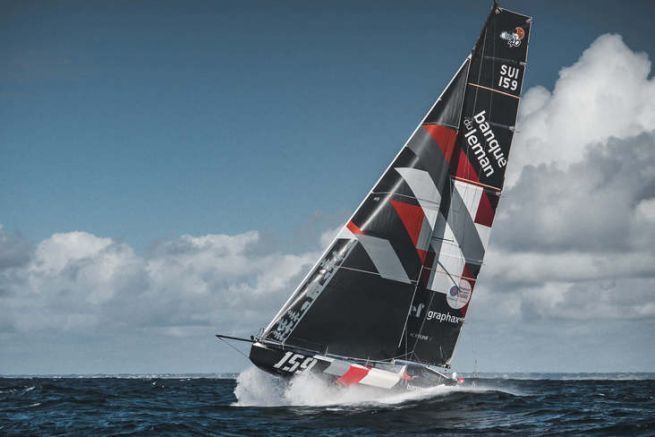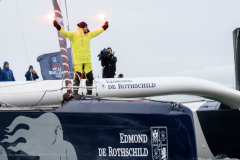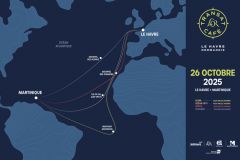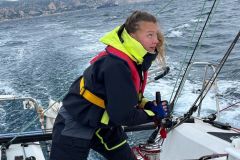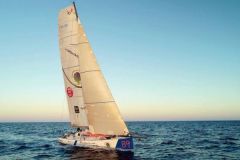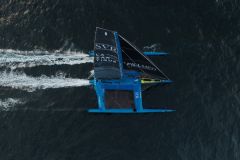How has the classroom evolved and what architectural changes have we seen since the last generation?
At the last edition in 2019, the first scows made their appearance: the Mach 4 Banque du Léman ( Editor's note: Manuard plan ) and the Reason plan ( Editor's note: Ian Lipinski's Credit Mutuel ). It worked out great for Ian Lipinski, he won the race. It was a very appropriate choice. We were able to see that the scow was a suitable formula.
And since then, it's only gotten bigger. There are more and more scows, both Raison and Manuard plans. What we see, with the 2022 Route du Rhum in sight, which is a gas pedal of projects, is that there have been quite a few projects started quite early with the major objective of the Rhum. They will use this Transat Jacques Vabre to calibrate themselves before 2022.
On this new edition, we will discover several new boats, the Pogo 4, a Verdier design, which is a scow. Marc Lombard is also launching a new scow boat, the Lift V2, and VPLP is launching its first Class40 - Clack 40 - which is also a scow. There is also another project in South Africa, a scow built on a Bertrand design (Editor's note: which suffered damage during transport and will unfortunately not be at the start).
The mass is said. Everyone is scowling. These are more efficient boats. The more scows there are in the class, the harder it will be to get good rankings with classic boats. Of course, there are always race facts, things you don't think about. These boats are very good formulas for ocean racing.

Is there an evolution in the demands of the skippers?
Probably. We can see that the races are very competitive in Class40. This is the case in many classes, but particularly in Class40. The difference is going to come down to details, but it could be the ability to push the performance over time. And for that, you need a certain comfort on board. You have to make sure that the boat is not too hard on the crew. More and more people are making this observation. For example, if we have well-designed watch seats, then the active watch will be effective.
What are the future developments, especially for the next editions?
There will surely be more evolutions, we are not going to stop there. We can see that even if the new boats released this year are also scows, they have their own identity and are quite different from each other. The scow theme can be used in many different ways. The new boats that will be scows will have their own specificity.
Where do we want to place the performance? Do we want a boat that is more suitable for downwind VMG? Do we identify a weather condition that predominates over the others? The most versatile?
All these questions, which have never been decided and which depend on the races in which the skippers will participate, will define the architectural choices.
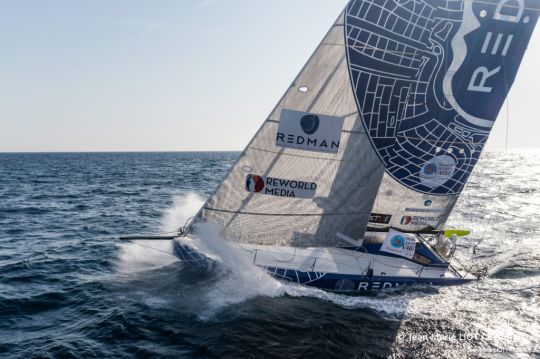
The Transat Jacques Vabre is a double-handed race. How do you adapt a boat for the different race configurations: double-handed, single-handed, crewed?
Double or single-handed, it's more or less the same problem. A double-handed crew is two people sailing alone. It doesn't change. The deck plans or concepts are the same.
Eventually, there will be round-the-world races. We will have to think about specific arrangements, different weather conditions than for a Jacques Vabre or a Route du Rhum. If we identify different weather statistics, it may be worth changing the cursor, to think about modifications.
With the new Transat Jacques Vabre courses, will some hull designs/boat designs be more advantageous than others?
On the old course, there was quite a lot of reaching content. It's possible that it will be a little less important this year. That would be more in favor of the more classic boats, which have fewer penalties on reaching. This may open up the game a bit. There are fewer deficits than on a course that went to Brazil and passed the doldrums.
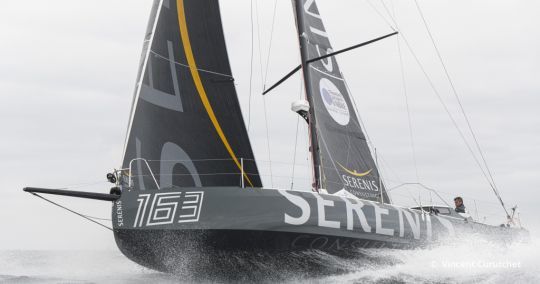
Among the forces at work, which ones have the most assets? Boats and skippers ?
The level is quite high and homogeneous so there is a bonus for all the crews who have some experience. Like Ian Lipinski. He has sailed a lot on his boat, the Swiss on Banque du Léman have sailed a lot, Antoine Carpentier on Redman also has a lot of experience on his boat. Axel Trehin too. That will count for a lot. These four stand out from the crowd. It's going to come down to who has the most miles on their boat this time.
